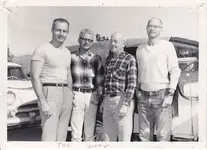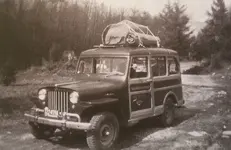BornOnFire wrote
Let's just play Devil's advocate for a second here. Let's assume that the Black-Robed Jezzies kept their promise and stayed out of the mining business.
There is no reason to play Devil's advocate, and ASSUME that the Jesuits stayed out of the mining business. One of the major Jesuit colleges sole source of income was the MINES it owned. If you will read the Catholic study, The Wealth of the Jesuits in Mexico, you will see a number of mines listed as owned and operated by Jesuits, along with a footnote which points out that some of the "haciendas" are ore mills. Father Polzer admitted to two instances where Jesuits were found mining, and a researcher named West found another. We know that they owned some mines openly, and in almost every area where the Jesuits operated, we have legends of their having mines secretly. In most cases, these legends can be traced to the Indians whom had been under Jesuit mission rule. I would suggest you read over the many posts in this thread.
BornOnFire also wrote
Why? They didn't need to! Although the Jesuit Priests were not owners/operators of these mines directly, they were indeed deeply connected and dependent upon mining operations during their 18th century occupation. In fact, the Jesuit Priests and the Mission System fostered a very successful economic structure by bartering their surplus livestock and agricultural goods with the Spanish Colonists who locally owned and operated these numerous mines.
As you know, the Spanish colonial government kept remarkably good records. Yet who owned the mines found in the Santa Rita mountains, like the Wandering Jew, the Montezuma, the Salero, among others, or the mines found in the Cerro Colorado and the region around Arivaca, which were already abandoned when the Spanish explorer de Anza passed through in 1776? Anza wrote in his diary that the mines around Arivaca had been abandoned in 1767,
the very year that the Jesuits were thrown out. So which Spanish colonists were the owners of these mines in Pimeria Alta? Why would the Pima and Papago Indians tell the Americans that these mines had been worked by the padres, not the Spanish?
I have no doubt that your argument is in part, sound; that the Jesuit mission system was fairly successful in farming and ranching enterprises, yet these enterprises do not seem to have been all that profitable, as shown by the Catholic study. Some had losses more years than profits, as is common in farming and ranching no matter who is managing them. Yet we know for a fact that the Jesuits owned mines, and these mines produced precious metals, precious metals which have largely never been recovered.
How were the Jesuits able to operate mines, "under the noses" of the Spanish authorities, we may well ask? This question is posed as if there were Spanish royal authorities patrolling the hills and watching for such things, which is far from the truth. The Jesuit missions were largely on the very fringes of Spanish colonial possessions, with few to no Spanish colonists living there. Why should they, (Spanish colonists) put their very lives at risk to go live among savages? And yet word of Jesuit mining activities WAS filtering back to the royal authorities to some degree, enough that on the arrest and expulsion, the Spanish made real efforts to find the hidden wealth of the Jesuits and illicit bullion, with but little success. If they had not heard something of this wealth, why would they have made any attempt to locate and recover it? Remember too that the workers of the Jesuit mines were the Indians themselves, whom had been indoctrinated by the Jesuits to never reveal the mines to a Spaniard.
Believe what ever you will; you can find plenty of historians whom will state flatly that the Jesuits never had any mines or treasures, even though amateurs can find proof which refutes this. Most historians simply don't look for evidence of an order of priests having had mines, or for that matter, even that their mission systems were very much akin to slavery and bondage for the Indians. No weight is given to the Indians own stories by historians and skeptics, even though we can point to at least one example where the Indians knew exactly where one of the long-lost Jesuit mines was located, and showed it to their friend (Dr John Walker and the Vekol mine).
Good luck and good hunting amigos, I hope you find the treasures that you seek.
Wishing you all a very Happy and prosperous New Year,
Oroblanco





